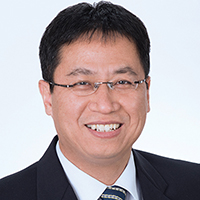“Quality is not an act, it is a habit.”–Aristotle
Introduction
Aristotle’s quote captures the essence of “quality" investing, highlighting the benefits of consistent and virtuous behaviors over occasional acts of brilliance. While the quality factor lacks a universally accepted definition, high quality companies tend to exhibit similar characteristics that persist over the long term. These companies often have resilient and evolving business strategies, robust operating models, strong balance sheets and the ability to generate repeatable cash flows consistently. Over time, we see these characteristics demonstrated in financial metrics via stable cash flows, strong profitability and high efficiency.
The S&P Quality FCF Aristocrats Indices were launched on Sept. 23, 2024, to track high quality companies that emphasize consistent and efficient free cash flow (FCF) generation. To qualify, companies must first demonstrate a minimum of 10 years of continuous positive FCF. Their profitability and efficiency are then assessed using two FCF-based metrics: FCF Margin and FCF return on invested capital (ROIC). These indices have tended to show a factor tilt toward quality and growth while maintaining a defensive stance.
This paper delves into the construction approach, back-tested performance and attribution of the S&P Quality FCF Aristocrats Indices. A follow-up paper will compare these indices to the broader S&P Dividend Aristocrats® Series and examine their performance across economic cycles.
Free Cash Flow: A Barometer of Company Quality
FCF represents the amount of cash generated by a business after accounting for cash outflows necessary to support operations, maintain capital assets and pursue organic growth. Simply put, it is the excess cash a company produces after covering its operational costs and capital expenditures. Firms with a high level of FCF tend to have greater financial flexibility, allowing them to pay dividends, repurchase stock, pay down debt or reinvest in growth opportunities. An important metric for analyzing the potential of a company, it is a cornerstone for discounted cash flow (DCF) valuation, reflecting the operational competence of management and signaling flexibility within internal financing.
The FCF calculation used in this methodology utilizes the generally accepted accounting principles (GAAP) financial measure of net cash provided by operating activities but then subtracts capital expenditures, resulting in a non-GAAP financial measure.
Evaluating a company’s FCF over multiple years is crucial, as it offers a clearer assessment of its financial health and durability. Consequently, these indices emphasize consistency, which aligns with the S&P Aristocrats approach. The three core metrics for evaluating quality through FCF are:
- Consistent Positive FCF: 10 years of consistent positive FCF;
- Sustained High FCF Margins: FCF divided by revenue, averaged over the past five years; and
- Repeated High FCF ROIC: FCF divided by the sum of total shareholder equity and total debt, also averaged over the past five years.


















































